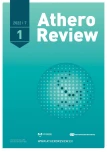How to improve the management of dyslipidemia in patients after acute coronary syndrome with a very high cardiovascular risk?
Authors:
Roman Margóczy 1; Ján Fedačko 2; Daniel Pella 3; Tomáš Forgon 4; Zuzana Ferenčíková 5; Martin Hudec 6; Miroslav Gbúr 7; Bibiána Kafková 7; Ivana Šoóšová 8; Peter Solík 9
Authors‘ workplace:
II. klinika kardiológie a angiológie, LF Slovenskej zdravotníckej univerzity a Oddelenie funkčnej diagnostiky, Stredoslovenský ústav srdcových a cievnych chorôb, a. s., Banská Bystrica
1; Klinika gerontológie a geriatrie LF UPJŠ a LVN a. s., Košice, Kardiologická ambulancia CARDIO D&R, s. r. o. Košice
2; II. kardiologická klinika UPJŠ LF a Východoslovenský ústav srdcových a cievnych chorôb, a. s., Košice
3; Oddelenie arytmií a koronárnej jednotky, Kardiocentrum Nitra
4; Ambulantné oddelenie, Kardiocentrum Nitra
5; Oddelenie akútnej kardiológie, Stredoslovenský ústav srdcových a cievnych chorôb, a. s., Banská Bystrica
6; I. kardiologická klinika – kardiologické oddelenie, Východoslovenský ústav srdcových a cievnych chorôb, a. s., Košice
7; Ambulantné oddelenie, Národný ústav srdcových a cievnych chorôb, a. s., Bratislava
8; Kardiologická ambulancia, Univerzitná nemocnica – Nemocnica sv. Michala, a. s., Bratislava
9
Published in:
AtheroRev 2022; 7(1): 21-25
Category:
Reviews
Overview
The management of dyslipidemia remains a challenge despite the volume of EBM data and the availability of treatment modalities. The ASCVD epidemic is the dominant cause of morbidity and mortality in the developed world. The integration of the Guidelines for the Management of Dyslipidemias into other documents demonstrates the importance of this issue. New findings lead to the tightening of LDL-C target values according to CV risk levels. Annual mortality after ACS in Slovakia is rising disproportionately compared to more developed countries. The root cause analysis points to poor management of risk factors after hospital discharge. Opportunities for improvement include, inter alia, the changing of the indication restrictions for PCSK9 inhibitors.
Sources
1. Zdravotnícka ročenka SR. Národné centrum zdravotníckych informácií: Bratislava 2021. ISBN 978–80–89282–80–6.
2. Mach F, Baigent C, Catapano AL et al. [ESC Scientific Document Group]. 2019 ESC/EAS Guidelines for the management of dyslipidaemias: lipid modification to reduce cardiovascular risk. Eur Heart J 2020; 41(1): 111–188. Dostupné z DOI: <http://dx.doi.org/10.1093/eurheartj/ehz455>.
3. Visseren FL, Mach F, SmuldersYM et al. [Task Force for cardiovascular disease prevention in clinical practice with representatives of the European Society of Cardiology and 12 medical societies with the special contribution of the European Association of Preventive Cardiology (EAPC)]. 2021 ESC Guidelines on cardiovascular disease prevention in clinical practice. Eur Heart J 2021; 42(34): 3227–3337. Dostupné z DOI: <http://dx.doi.org/10.1093/eurheartj/ehab484>.
4. Collet JP, Thiele H, Barbato E et al. [Task Force for the management of acute coronary syndromes in patients presenting without persistent ST-segment elevation of the European Society of Cardiology (ESC)]. 2020 ESC Guidelines for the management of acute coronary syndromes in patients presenting without persistent ST-segment elevation. Eur Heart J 2021; 42(14): 1289–1367. Dostupné z DOI: <http://dx.doi.org/10.1093/eurheartj/ehaa575>.
5. Knuuti J, Wijns W, Saraste A et al. [Task Force for the diagnosis and management of chronic coronary syndromes of the European Society of Cardiology (ESC)]. 2019 ESC Guidelines for the diagnosis and management of chronic coronary syndromes. Eur Heart J 2020; 41(3): 407–477. Dostupné z DOI: <http://dx.doi.org/10.1093/eurheartj/ehz425>.
6. Cosentino F Grant PJ, Aboyans V et al. [Task Force for diabetes, pre-diabetes, and cardiovascular diseases of the European Society of Cardiology (ESC) and the European Association for the Study of Diabetes (EASD)]. DM 2019 ESC Guidelines on diabetes, pre-diabetes, and cardiovascular diseases developed in collaboration with the EASD. Eur Heart J 2020; 41(2): 255 – 323. Dostupné z DOI: <http://dx.doi.org/10.1093/eurheartj/ehz486>.
7. Ibanez B, James S, Agewall S et al. 2017 ESC Guidelines for the management of acute myocardial infarction in patients presenting with ST-segment elevation: the Task Force for the management of acute myocardial infarction in patients presenting with ST-segment elevation of the European Society of Cardiology (ESC). Eur Heart J 2018; 39(2): 119–177. Dostupné z DOI: <http://dx.doi.org/10.1093/eurheartj/ehx393>.
8. Baigent C, Blackwell L, Emberson J et al. [Cholesterol Treatment Trialists’ (CTT) Collaboration]. Efficacy and safety of more intensive lowering of LDL cholesterol: a meta-analysis of data from 170,000 participants in 26 randomised trials. Lancet 2010; 376(9753): 1670–1681. Dostupné z DOI: <http://dx.doi.org/10.1016/S0140–6736(10)61350–5>.
9. Schubert J, Lindahl B, Melhus H et al. Low-density lipoprotein cholesterol reduction and statin intensity in myocardial infarction patients and major adverse outcomes: a Swedish nationwide cohort study. Eur Heart J 2021; 42(3): 243–252. Dostupné z DOI: <http://dx.doi.org/10.1093/eurheartj/ehaa1011>.
10. Studencan M, Hricak V, Kovar F et al. Management of patients with Acute Coronary Syndromes in Slovakia in 2015. Current analysis of the SLOVAKS registry. Cardiology Lett 2017; 26(3):125–137.
11. Vohnout B, Fábryová L, Klabník A et al. Treatment pattern of familial hypercholesterolemia in Slovakia: Targets, treatment and obstacles in common practice. Atherosclerosis 2018; 277 : 323–326. Dostupné z DOI: <http://dx.doi.org/10.1016/j.atherosclerosis.2018.06.857>.
12. Banach M, Benson PE, Vrablik M et al. Optimal use of lipid-lowering therapy after acute coronary syndromes: A Position Paper endorsed by the International Lipid Expert Panel (ILEP). Pharmacol Res 2021 : 166 : 105499. Dostupné z DOI: <http://dx.doi.org/10.1016/j.phrs.2021.105499>.
13. Yusuf S, Hawken S, Ounpuu S et al. [INTERHEART Study Investigators]. Effect of Potentially Modifiable Risk Factors Associated with Myocardial Infarction in 52 Countries (the INTERHEART Study): Case-Control Study. Lancet 2004; 364(9438): 937–952. Dostupné z DOI: <http://dx.doi.org/10.1016/S0140–6736(04)17018–9>.
Labels
Angiology Diabetology Internal medicine Cardiology General practitioner for adultsArticle was published in
Athero Review

2022 Issue 1
Most read in this issue
- Early prevention of cardiovascular events – recent data and practical approach
- Familial dysbetalipoproteinemia: known unknown
- Immuno-thrombosis, coagulopathy, pulmonary embolism and diagnosis in patients with COVID-19
- The effect of mechanical circulatory supports on the vascular system
